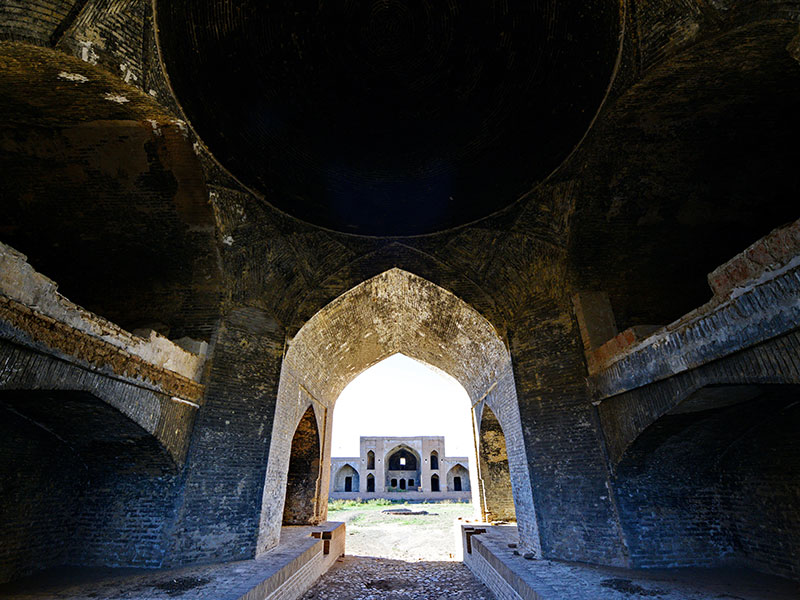Bazaars & Caravanserais
Historical bazaar of Tabriz (Azerbaijan). Photograph: ©Patrick Ringgenberg.
The bazaar: a complex and highly organized world of stalls, workshops, hammams and places of worship, city within the city, economic heart, place of power, with once considerable influence.
The caravanserai: a fortified lodge, with rooms, cisterns and warehouses, built along the caravan routes, and where travelers, traders and pilgrims could stop, sheltered from dangers.
Today, industrial capitalism and Western-style shopping centers have marginalized the ancient function of bazaars. The caravanserais along the roads have been empty for a long time: some have become hotels, others the refuge of flocks of sheep. But bazaar and caravanserai were the pillars of a flourishing caravan economy, which made the fortune of the Orient. If the bazaar is no longer what it was, there are historic bazaars, in Isfahan, Kerman, Tabriz, Kashan or Shiraz, which still speak, through the richness of their architecture, of the fundamental economic and cultural role that they occupied for centuries. As for the caravanserais, listed as UNESCO heritage, they are marvels of functional construction, reminiscent of travel as much as of history, of the great contacts between East and West over thousands of years, of the founding circulation of ideas, techniques and people.

Safavid caravanserai of Izad Khwast (17th century). Photograph: ©Patrick Ringgenberg.

Ahovan caravanserai, 17th century. Photograph: ©Patrick Ringgenberg.